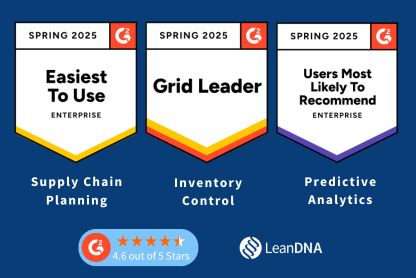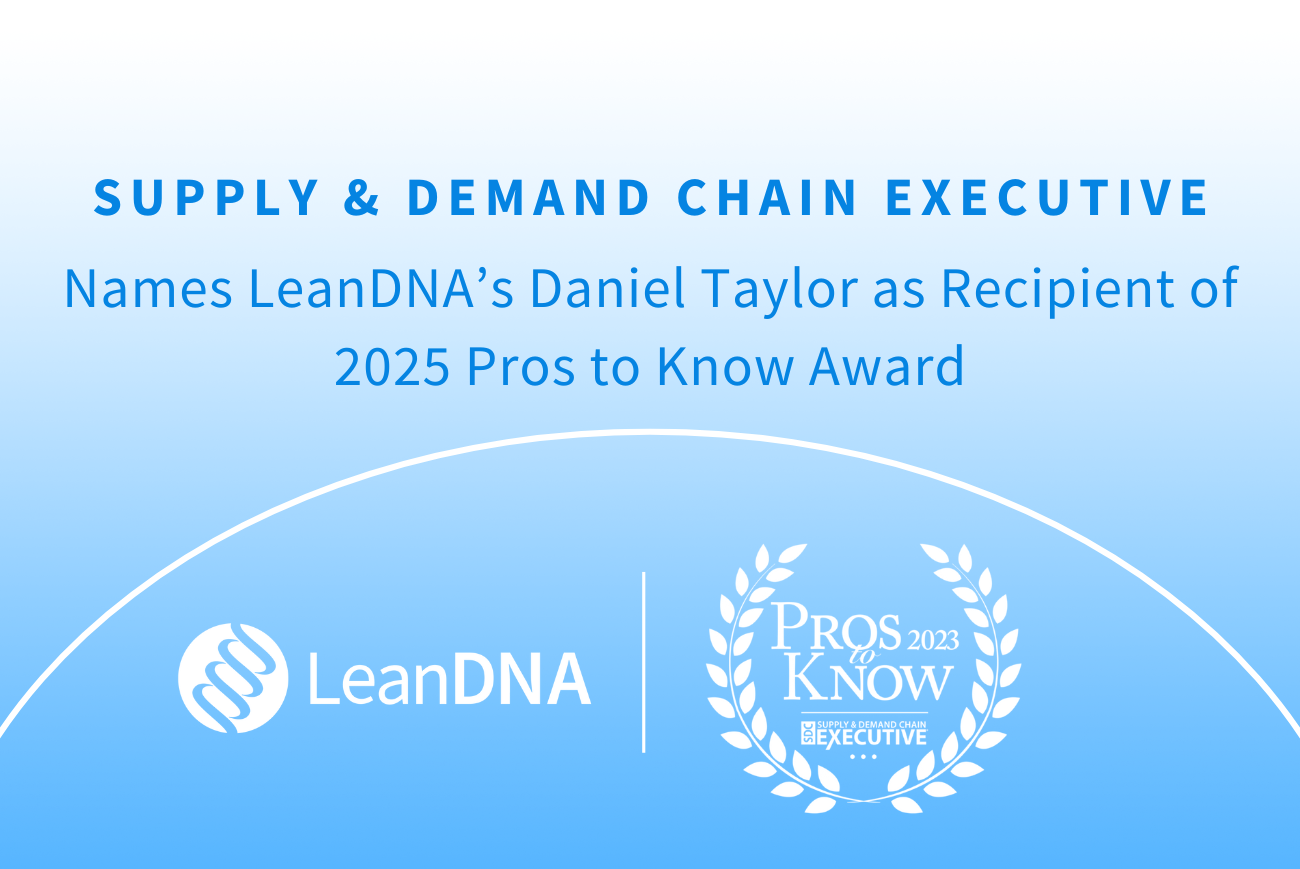Until recently, achieving supply chain efficiency has been a mirage. With rising customer demands for agility and responsiveness, the inefficiency of current systems has only magnified the shortcomings of traditional supply chain management technologies. For the most part, traditional supply chain management systems function as siloed operations that hinder collaboration and thorough visibility and have resulted in disjointed workflows and suboptimal outcomes. A lack of real-time visibility in these systems leaves decision-makers with blind spots, and unable to proactively address disruptions or capitalize on emerging opportunities.
An efficient supply chain management system should serve as a conductor of sorts, guiding and synchronizing activities across the value chain. Its role should be to offer precise coordination at every juncture, end-to-end visibility, and provide clarity and actionable intelligence for all players. But for so many businesses, this remains a pipe dream. Bogged down by inefficiencies, disruptions, and missed opportunities, a lot of companies continue to grapple with the failures of the current systems.
However, LeanDNA’s intelligent supply chain orchestration and execution platform is shifting the paradigm. It acts as a single source of truth to break down silos between supply chain teams and suppliers, align priorities, and offer precise data insights and actions that maximize supply chain value, reducing shortages and improving on-time delivery.
LeanDNA is a game changer for companies and leaders seeking the best value from their supply chain investment.
This article will cover:
- The challenges of the current supply chain system, and how businesses can build alternate resources to mitigate against the fallout of current inefficiencies
- Supply Chain Orchestration and its benefits
- The LeanDNA advantage for enterprise-level manufacturing businesses and organizations
Supply Chain Defined
A supply chain refers to the interconnected network of entities, activities, resources, and information involved in the production, distribution, and delivery of goods or services from raw material sourcing to end consumers. This network typically includes suppliers, manufacturers, distributors, retailers, and customers, along with the various processes and functions such as procurement, production, inventory management, logistics, and customer service. The primary goal of a supply chain is to efficiently and effectively fulfill customer demand while minimizing costs, optimizing inventory levels, and maximizing overall value creation throughout the entire chain.
In extremely competitive industries, supply chain management is vital in determining a company's success or failure. By effectively orchestrating the various components of the supply chain, businesses can streamline operations and achieve maximum efficiency.
Imagine a supply chain system with seamless integration, end- to end visibility, and tools that equip decision-makers to not just react, but to anticipate market shifts with foresight. A system built to surmount the hurdles posed by outdated systems, siloed processes, and fragmented communication channels. In this journey towards enhanced supply chain orchestration, innovation plays a pivotal role, and one such solution is LeanDNA. LeanDNA’s intelligent supply chain orchestration and execution platform offers a roadmap to efficiency, resilience, and competitive advantage. By embracing our holistic approach to inventory management and supply chain optimization, your business can transcend the limitations of traditional supply chain management to join the league of companies that have successfully pivoted towards supply chain excellence in their supply chain management process.
Challenges of Current Supply Chain Systems
The current traditional supply chain systems face several significant challenges, including:
Lack of Visibility: Limited visibility into supply chain operations, including inventory levels, production status, and transportation, hinders decision-making and responsiveness to changes in demand or disruptions. This seeming lack of visibility makes it difficult for discrete manufacturers to monitor and optimize their operations effectively.
Supply Chain Disruptions: Disruptions have become a fairly regular occurrence in global trade. From supplier failures to transportation delays and natural disasters, there is an abundance of what can go wrong with your supply chain. These disruptions are often time-consuming and can lead to huge financial liabilities.
Fragmented Data: Data fragmentation across different systems and stakeholders are some of the challenges that hinder communication and collaboration in legacy systems. Fragmentation creates inefficiencies and can lead to errors in decision-making.
Customer Expectations: Increasing customer demands and expectations of faster delivery, customization, and transparency is putting a huge strain on the supply chain capabilities of traditional systems. The siloed nature of the current approach to supply chain management does not provide lean manufacturers with the tools to adapt quickly and efficiently to changing market demands.
Globalization: Globalization, coupled with the emergence of near-shoring practices, has significantly transformed supply chains. While globalization has expanded supply chains across borders, near-shoring strategies involve relocating production facilities closer to the markets they serve. This shift aims to reduce lead times, mitigate logistical complexities, and enhance responsiveness to market demands. However, despite these efforts, supply chains still face challenges such as geopolitical tensions and economic uncertainties. These complexities pose obstacles for legacy systems, making it challenging to effectively manage and optimize end-to-end processes.
Supply Chain Orchestration
Supply chain orchestration is a strategic approach that is revolutionizing traditional supply chain practices, moving beyond planning only to combining planning with execution. At its core, supply chain orchestration seeks to provide precise coordination at every juncture, offering clarity and actionable intelligence for business owners and all players involved. It represents a paradigm shift from reactive to proactive supply chain management, where real-time visibility and collaboration become the norm rather than the exception.
Leading the charge for the adoption of supply chain orchestration strategies and systems is LeanDNA - an innovative supply chain orchestration platform designed to empower businesses across industries with actionable insights and data-driven decision-making capabilities. Beyond traditional inventory planning, LeanDNA integrates optimization and execution technologies, enabling organizations to unlock new levels of efficiency and agility within their supply chains.
But what are the tangible benefits of supply chain orchestration, and why should managers and decision-makers focus on true orchestration through integrated planning and execution?
Let's take a look at some compelling examples:
- Streamlined Operations and Reduced Costs: Aerospace and defense giant Spirit AeroSystems exemplifies the transformative potential of supply chain orchestration. Faced with intricate manufacturing demands and the challenges of a globalized supply chain, Spirit turned LeanDNA to gain real-time visibility into its inventory and actionable recommendations for revenue opportunities. Spirit was able to streamline collaboration across teams and suppliers, synchronize workflows, and drive improved business performance. The results were remarkable: a substantial 16% decrease in inventory, unlocking $80 million in working capital and achieving a notable 20% improvement in on-time customer delivery rates.
- Enhanced Efficiency and Flexibility: Toyota's pioneering approach to supply chain orchestration epitomizes the evolution of Just-In-Time (JIT) manufacturing beyond mere inventory reduction to the optimization of inventory rightsizing. By integrating JIT principles with Total Quality Management (TQM) techniques, Toyota has redefined supply chain efficiency and flexibility. Unlike traditional JIT methodologies focused solely on minimizing held inventory, Toyota's orchestration strategies aim to balance inventory levels to minimize excess while mitigating the risk of shortages simultaneously. This sophisticated approach empowers Toyota to swiftly adapt to shifting market demands, maintain a competitive edge, and deliver unparalleled value to customers.
- Improved Visibility and Decision-Making: One of the key technologies driving supply chain orchestration for enterprise-level manufacturers is LeanDNA - an intelligent supply chain execution platform that provides businesses with real-time visibility into their supply chain operations. By leveraging LeanDNA's capabilities, organizations can increase predictability by identifying inefficiencies, optimize inventory levels, reduce lead times, and make data-driven decisions to improve overall supply chain performance. This not only enhances operational efficiency but also enables businesses to stay ahead of the curve and capitalize on emerging opportunities in the market.
The imperative of supply chain orchestration is undeniable in today's competitive landscape. Consider HNI, a leader in office furniture and building products, facing challenges in inventory optimization and supply chain execution. Integrating LeanDNA's inventory optimization platform, HNI transformed their approach. With automated processes, analysts shifted focus to high-value tasks, enhancing on-time deliveries. LeanDNA provided comprehensive shortage visibility, aiding accurate inventory assessment and supplier performance improvement. Results were notable, including a 20% boost in on-time and completed shipment rates.
Supply Chain Orchestration with LeanDNA
LeanDNA has become a primary business system for buyers, managers, and planners at many of the largest global manufacturers. One of the key benefits of LeanDNA is its ability to drive efficiency and resilience through data-driven decisions. Managers leverage LeanDNA to run meetings and guide their teams toward high-value activities. It also empowers procurement teams to prioritize critical actions that will have the most impact on their operations. By aligning priorities and activities, LeanDNA helps managers ensure that every action contributes to the overarching goals of the organization.
LeanDNA offers unparalleled visibility into supply chain operations. It provides clear insights and actionable intelligence that allows teams to focus on proactive work that offers the most value to their customers and the company. From a centralized platform, supply chain leaders can track progress, monitor performance, and gain insights across multiple sites. This organized and visual data experience allows leaders to make informed strategic decisions that drive growth and success for the entire organization.
Are you ready to revolutionize your supply chain management and enhance orchestration with LeanDNA? Sign up for a demo today to learn more about how LeanDNA can offer end-to-end visibility of your supply chain, and synchronize your procurement teams and suppliers through a centralized single source of truth.
Take the first step towards unlocking the full potential of your supply chain—schedule your demo now.



